Моделирование параметров текста для разработки систем искусственного интеллекта. Рубрика в журнале - Вестник Волгоградского государственного университета. Серия 2: Языкознание
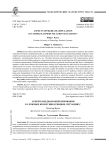
Aspects of media manipulation in complex communication situations
Статья научная
The article examines the forms of manipulation in complex communication situations, the essential component of which is multidirectionality, i.e. individual communicative acts addressing multiple audiences. Since complex communication situations are multidirected, they involve various participants who are direct interlocutors, moderators, communication observers, etc. The paper discusses the phenomena of the communicative action orientation towards multiple audiences in staged communication and the participation of the manipulated audience in Internet communication. Multidirectional communication is typical for advertising and talk shows. Although the speakers in talk shows address their interlocutors directly, their statements are perceived by the audience in the studio and the TV viewers. This situation can have a manipulative effect since the latter are not aware that they are the intended recipients. In commercials, characters explain the benefits of a product to other participants in the staged communication event. However, the communication is aimed at the TV audience, which is involved in a large-scale manipulation. From the point of view of manipulation theory, questions arise, such as the effects of monitoring communication (passive participation), the extent to which the recipient themself is part of the manipulation and the responsibility of the recipient and participant of communication in a communicative event.
Бесплатно
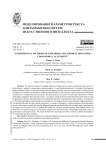
Experimental methods of exploring multimodal discourse: crossmodal alignment
Статья научная
The study advances Crossmodal Alignment Framework to explore multimodal discourse in its three formats - semiotic, communicative and perceptive - via multimodal experiment. It considers the alignment patterns obtained from two semiotic modes (text and image), transferred in two communicative modes (speech and gesture), sensed by two perception modes (visual and audial). The common research framework determines the patterns as modulated by discourse tasks. The study features the results of multimodal experiments with the participants engaged in three discourse tasks: 1) receptive, which presumes obtaining information from text and image stimuli; semiotic alignment patterns are identified indirectly via participants' gaze response; 2) productive, in which the participants communicate the information in monological format; communicative alignment patterns are identified directly via their speech and gesture; 3) receptive-productive, which presupposes the participants perceive information visually and audially; alignment patterns are identified directly via participants' gaze behavior contingent on the stimuli areas of interest and indirectly via their speech response. Data analysis allows to determine and scale the degree of crossmodal alignment to discourse tasks, which helps identify the input of each mode to solving these tasks. The research framework and obtained results contribute to further development of multimodal discourse methods.
Бесплатно
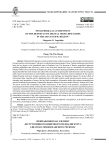
Peniaphobia as a component of the destructive digital media discourse in the Asia-Pacific region
Статья научная
Modern hybrid linguistic-mental and information warfare massively uses the promotion of destruction in the mass media as a tool of negative ‘soft power' media discourse directed against China, Vietnam and Russia owing to their being the key players in the geopolitical arena of Southeast Asia. The discourse of Western geopolitical opponents promotes peniaphobia (fear of poverty), which is one of the basic human fears since it is associated with ensuring the efficient viability of man and human civilization as a whole. The authors attribute peniaphobia to one of the universal social stigmas that affect the social structure and culture of the community, recognizing that media discourse is actively using open public Internet communication to control public consciousness gently. Meanwhile, intense exploitation by the media of alleged financial insolvency, looming economic crises, food shortages and impending hunger, the adverse effects of international labor migration and the deplorable state of the labor markets rapidly generate protest moods in society, changing social perceptions of money, food and food consumption. Information intakes that enhance peniaphobia use scenario modeling the presentation of potentially dangerous themes in the mass media of Russia, Vietnam and China. The article assesses the manipulation of public consciousness in the context of the pandemic, complicated by the psychological and informational confrontation between East and West and Western socio-economic and political sanctions imposed in connection with the Russian-Ukrainian conflict. Modern social culture has updated the features of presenting information using a digital format and subsequent decoding, which, in general, has influenced social dynamics. Based on analyzing the ethno- and sociocultural behavior of ‘digital aborigines' on the Internet, the sociocultural approach to modern manipulation techniques of the public consciousness demonstrates the change in the use of methods of manipulation compared to representatives of the ‘pre-digital generation'.
Бесплатно
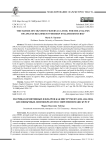
Статья научная
This study is devoted to the development of the author's method “The Matrix of Cognitive Filters” (MCF). It is used to model the process of inferring the meaning of creative elements (linguocreatemes) in multimodal online discourse. To accomplish this task, key cognitive mechanisms for generating the meaning of linguocreatemes were identified and researched. These are banner blindness, evaluative categorization and conceptualization, (de)compression of information and profiling, conceptual metaphor, conceptual metaphtonymy, and conceptual integration. Monomodal verbal and multimodal linguocreatemes (more than 18,000 units) were selected with a continuous sampling method from English-language Internet resources, visual and verbal corpora. Theoretical analysis showed that the MCF can be used to model the overall ability of a linguocreateme to initiate cognitive resonance in a recipient. This method also allows for the collection of data on the probabilistic prediction of the level of cognitive resonance and positive or negative dissonance in an addressee. The empirical data obtained during a practical linguistic-cognitive experiment among English-speaking respondents from across countries confirmed the theoretical results of the study. The participants had to infer the general meanings of several multimodal linguocreatemes in accordance with the MCF. The experiment confirmed the feasibility of using this method to assess the occurrence of cognitive resonance, positive or negative dissonance, as well as obtaining additional data on the recipient's reactions to different linguocreatemes in English online discourse.
Бесплатно
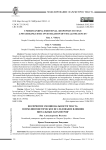
Understanding emotional responses to text: a psycholinguistic investigation of visual influences
Статья научная
The paper explores the influence of visual elements on the emotional perception of textual content. Based on the experimental results, the authors evaluated how illustrations affected emotional responses to polycode/creolized texts. By using the semantic differential scales method, correlations between emotions and specific visual parameters were identified and analyzed. The results revealed how visual parameters of illustrations influence emotional responses to text in Russian, suggesting potential adjustments to emotional perception by manipulating these parameters: illustration style impacts recipient emotions; ambiguity and originality increase negative emotions, while realistic illustrations have varied effects. Additionally, the study investigated how variations in illustration style and content altered emotional interpretations of text, providing insights into the complex interplay between visual and verbal elements in communication. The findings suggest practical implications for educational material development, emphasizing the potential to adjust the emotional perception of textual content by manipulating visual characteristics. This research sheds light on the dynamics of emotional response to multimedia stimuli and offers valuable considerations for content creators seeking to optimize audience engagement and comprehension. It attempts to bridge the gap between visual perception, emotion processing, and linguistic communication, offering insights for both practical applications in NLP (Natural Language Processing) and theoretical advancements in cognitive sciences.
Бесплатно

